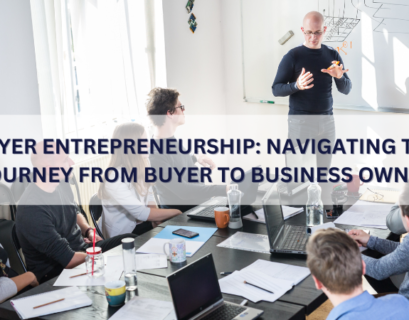Buyer entrepreneurship has transformed into a powerful avenue for individuals looking to take ownership of existing businesses, leveraging proven models, and growing their enterprises. As a buyer-entrepreneur, your role differs significantly from that of a traditional startup founder. Instead of building a business from scratch, you focus on acquiring, improving, and expanding already successful ventures. Understanding the right strategies is key to long-term success.
What is Buyer Entrepreneurship?
Buyer entrepreneurship refers to the practice of acquiring an established business rather than starting one from the ground up. Buyer-entrepreneurs focus on identifying businesses with growth potential, making the purchase, and scaling the enterprise through innovative management and operational improvements. This model offers several benefits, including existing customer bases, proven business models, and a pre-established brand reputation.
Why Buyer Entrepreneurship Appeals to Many
One of the major attractions of buyer entrepreneurship is the reduced risk compared to starting a new business. Since the business already has financial history, buyer-entrepreneurs can make more informed decisions, with clear insights into revenues, customer behavior, and operational challenges. For entrepreneurs seeking faster returns, purchasing a business can accelerate their journey.
Key Buyer Entrepreneurship Strategies
While buying a business can reduce risks, it still requires strategic planning to ensure success. The following strategies help buyer-entrepreneurs maximize the potential of their acquisitions:
1. Conduct Thorough Due Diligence
Before purchasing any business, conducting in-depth research is essential. Due diligence involves scrutinizing financial records, reviewing contracts, evaluating customer and supplier relationships, and assessing the overall market potential. This process helps you uncover hidden issues and assess whether the business aligns with your financial and operational goals.
2. Focus on Post-Acquisition Growth
Once the business is acquired, shift your focus toward growth. Identify areas where the business can expand its market share, such as increasing product offerings, expanding into new regions, or tapping into underserved customer segments. Implementing a comprehensive growth strategy early on can lead to sustainable success.
3. Strengthen Operational Efficiency
Inefficiencies within an existing business can hinder profitability. By streamlining operations and optimizing processes, buyer-entrepreneurs can reduce costs and increase revenue. Look for opportunities to automate repetitive tasks, renegotiate supplier contracts, and reduce waste within the supply chain.
4. Leverage Existing Brand Equity
An established business comes with a brand that has recognition and loyalty among customers. Leverage this equity by maintaining consistency in customer service, delivering on brand promises, and expanding marketing efforts to boost visibility. Buyers who understand the value of the existing brand can build stronger customer relationships and foster trust.
5. Engage in Digital Transformation
In today’s digital world, businesses need to embrace technology to remain competitive. Buyer-entrepreneurs can unlock growth potential by investing in e-commerce platforms, enhancing digital marketing efforts, and integrating technology to improve customer experiences. Adopting a forward-thinking approach to digital innovation can make a business more resilient and adaptable to market changes.
Conclusion: Mastering Buyer Entrepreneurship
Buyer entrepreneurship offers a unique opportunity to take an established business and scale it to new heights. By employing strategies such as due diligence, operational efficiency, and digital transformation, buyer-entrepreneurs can turn acquisitions into thriving enterprises. Success in this field relies on vision, meticulous planning, and a clear focus on growth.












